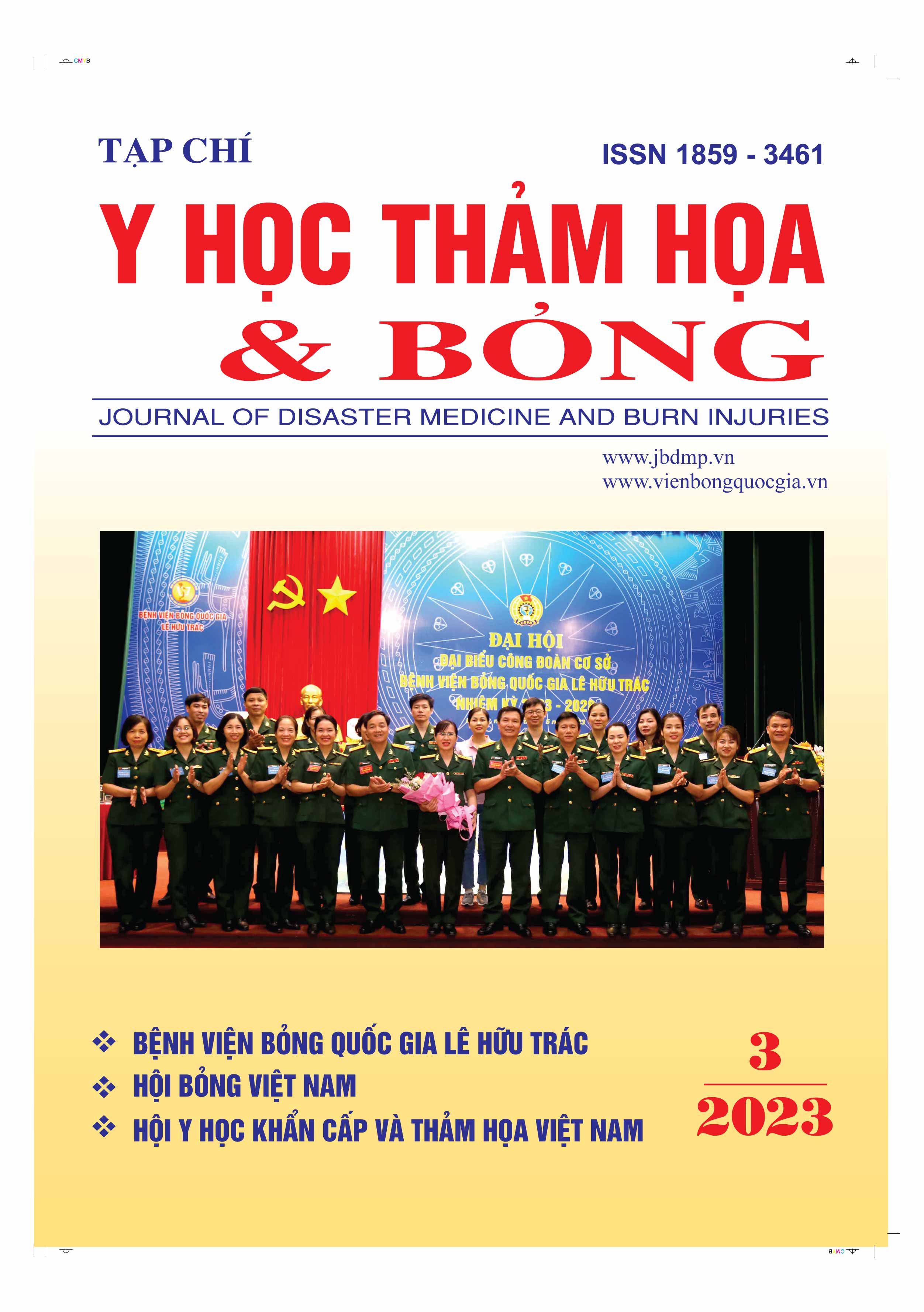General anesthesia for mandibular cancer surgery and reconstruction with fibula free flap
Main Article Content
Abstract
Introduction: General anesthesia for mandibular cancer surgery and reconstruction with a microsurgical free flap is challenging for anesthetists because of the long operative duration, difficult airway control, and maintaining appropriate blood pressure to facilitate surgery. On January 16, 2023, for the first time, Military Hospital 103 performed partial mandibular resection and floor of the mouth with bilateral cervical lymphadenectomy I, II, III, and IV and reconstruction with a fibula-free flap for a patient with mandibular epithelium cancer T4N2M0, under endotracheal general anesthesia.
Case presentation: Patients Nguyen Khac D. is a male, 54 years old, with a healthy past medical history. On January 3, 2023, he was admitted to the Maxillofacial Department of Military Hospital 103 in a state of alertness, with a temperature of 37°C, respiratory and hemodynamic stability, no comorbidities, and no allergies.
Local injury: The gingival tumor on the floor of the mouth in the R31-44 area was firm, rough, painless, and non-ulcerative. Preoperative biochemical and hematological results were within normal limits.
On January 9, 2023, the patient had a biopsy of the lesion, and histopathological results concluded that it was squamous cell carcinoma, keratinized grade II. At 08:00 on January 16, 2023, the patient was transferred to the operating room with the diagnosis of mandibular epithelium cancer T4 and N2M0. The method of surgery was partial mandibular resection and floor of the mouth with bilateral cervical lymphadenectomy I, II, III, and IV and reconstruction with a fibula-free flap under endotracheal general anesthesia. General anesthesia and surgery were safe. The patient was discharged from the hospital on February 17, 2023.
Conclusion: Microsurgical free flap in the treatment of head and neck malignant tumors presents a challenge for the anesthetist, and the ultimate goal is to optimize the physiological conditions for flap survival.
Article Details
Keywords
General anesthesia, mandibular cancer, reconstructive surgery
References
2. Supkis DE Jr, Dougherty TB, Nguyen DT, Cagle CK (1998). Anesthetic management of the patient undergoing head and neck cancer surgery. Int Anesthesiol Clin 36:21-29
3. Neelakanta G, Chikyarappa A (2006). A review of patients with pulmonary aspiration of gastric contents during anesthesia reported to the Departmental Quality Assurance Committee. J Clin Anesth 18:102-107.
4. Nikhar SA, Sharma A, Ramdaspally M, Gopinath R (2017). Airway Management of Patients Undergoing Oral Cancer Surgery: A Retrospective Analysis of 156 Patients. Turk J Anaesthesiol Reanim 45(2):108-111
5. Zheng, G., Feng, L. & Lewis, C.M (2019). A data review of airway management in patients with oral cavity or oropharyngeal cancer: a single-institution experience. BMC Anesthesiol 19, 92.
6. Burtner DD, Goodman M (1978). Anesthetic and Operative Management of Potential Upper Airway Obstruction. Arch Otolaryngol 104(11): 657-661.
7. James I. Beck, Kevin D. Johnston (2014). Anaesthesia for cosmetic and functional maxillofacial surgery. Continuing Education in Anaesthesia Critical Care & Pain 14(1):38-42.
8. Claroni C, Torregiani G, Covotta M, et al. (2016). Protective effect of sevoflurane preconditioning on ischemia-reperfusion injury in patients undergoing reconstructive plastic surgery with microsurgical flap, a randomized controlled trial. BMC Anesthesiol. 16(1):66
9. Swaraj, Dr & Sonowal, Swaraj & Das, Anupam & Sumanjit, Dr & Boro, Sumanjit S & Borah, Tridip. (2020). Anaesthetic considerations for head and neck cancers in patients undergoing reconstructive free flap surgeries-a review of 55 patients. European Journal of Translational and Clinical Medicine. 7.
10. Sear J. W. (1998). Recent advances and developments in the clinical use of i.v. opioids during the peroperative period. British journal of anaesthesia, 81(1):38-50


